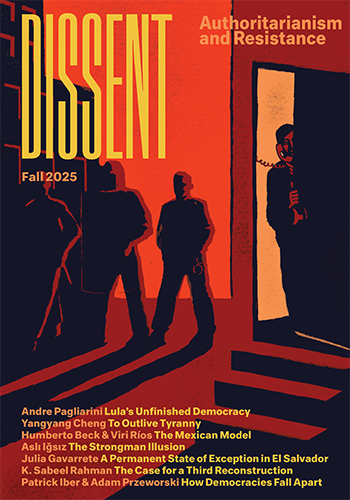End of a Credo
End of a Credo
In the field of performance art, Marina Abramović is a legend, and her recently concluded six-week show, Marina Abramović: The Artist Is Present, at the Museum of Modern Art in New York, has been a turning point in giving performance art mainstream status.
At the political core of the sixty-three-year-old Abramović’s work, like that of many performance artists, is the egalitarian belief that those who come to see her should not remain passive spectators. They should join in the performance and help determine its outcome. It is an idea that did not originate with Abramović. As early as 1965, Yoko Ono staged a Carnegie Recital Hall performance, Cut Piece, in which she invited the audience to cut pieces out of her clothing while she sat immobile on the floor with a pair of scissors next to her.
But over the years Abramović has taken participation much further than Yoko Ono ever did, and nowhere is her stretching of artistic boundaries clearer than in “Imponderabilia,” the Abramović performance at MoMA that got the most attention from the media. In “Imponderabilia,” the museumgoer is asked to walk between a nude man and woman (Abramović describes them as naked) in order to get from one gallery to another. The two figures are so close together that the museumgoer must pass sideways and make the decision of whom to face.
If you don’t mind becoming part of a nude sandwich, the passage is fun. A few seconds later, you enter the main galleries of the show, and you have a sense you don’t have at a theater or a concert hall that you have in some way contributed to the performance. When I was at The Artist Is Present, most men, myself included, turned toward the woman (better, I thought, to brush up against two breasts than a penis). Most women did the opposite.
It turned out, however, that for a small number of museumgoers, the question of which way to turn became, Whom to grope? In April alone, three people were removed from MoMA for “inappropriate touching.” One elderly man even had his thirty-year MoMA membership revoked.
FOR THOSE OF US who ride rush-hour subways in New York and have learned tight-quarters etiquette, such punishment seems about right. Nonetheless, the imposition of a penalty for touching raises a key question: how much does Abramović’s reputation depend on teasing rather than challenging middle-class sensibilities?
The answer to that question is, too much. The most powerful political piece in The Artist Is Present was “Balkan Baroque,” which featured film from 1997, when, to mark the genocide that had taken place in her homeland, the former Yugoslavia, Abramović washed 1,500 fresh beef bones while continually singing folk songs from her childhood. “Balkan Baroque” was repellent, bloody, and painful to watch. But it was hard to know what emphasis to give it when it was also competing with film of Abramović cutting a five-pointed star o...
Subscribe now to read the full article
Online OnlyFor just $19.95 a year, get access to new issues and decades' worth of archives on our site.
|
Print + OnlineFor $35 a year, get new issues delivered to your door and access to our full online archives.
|






